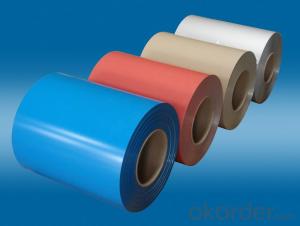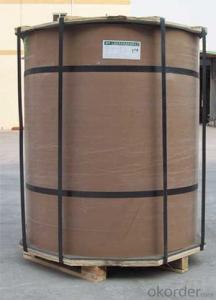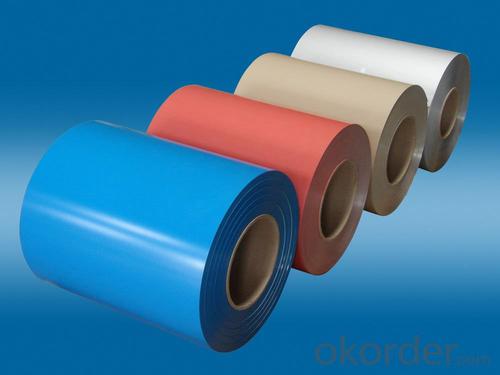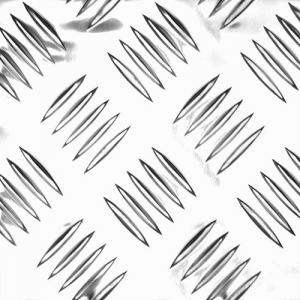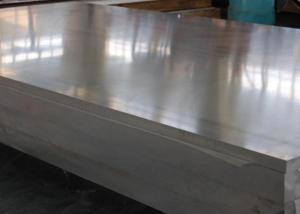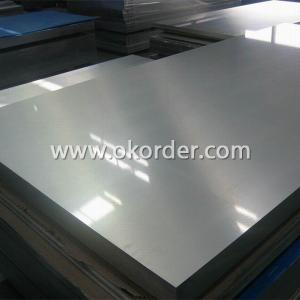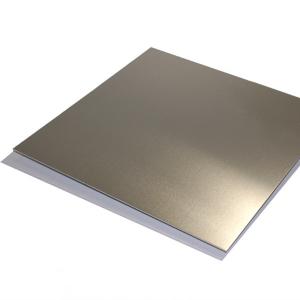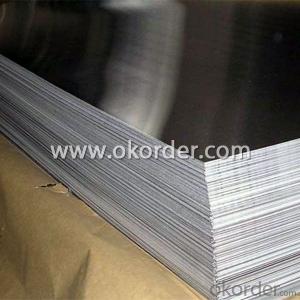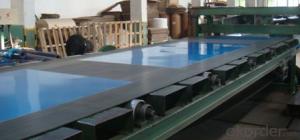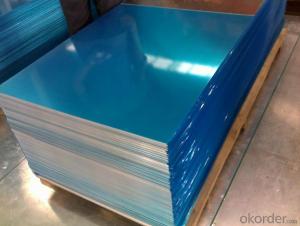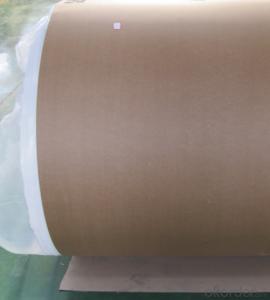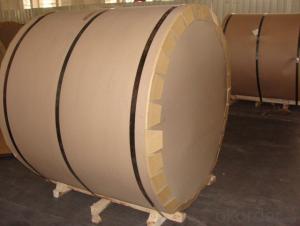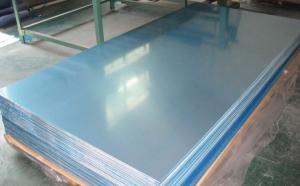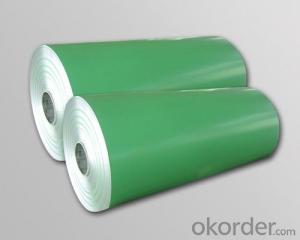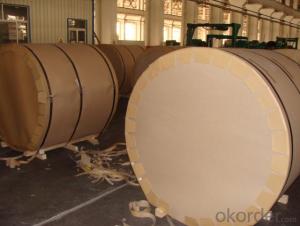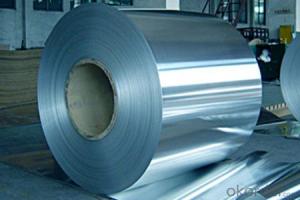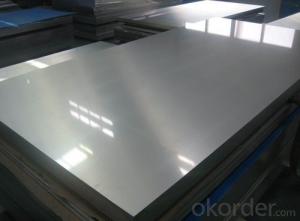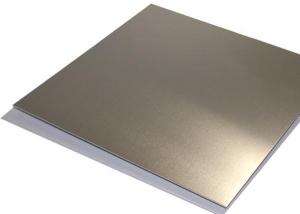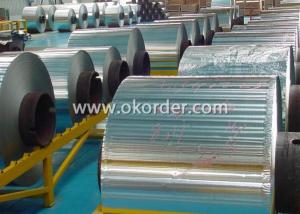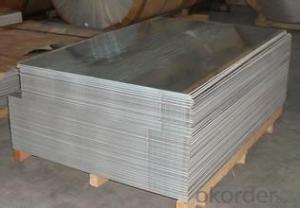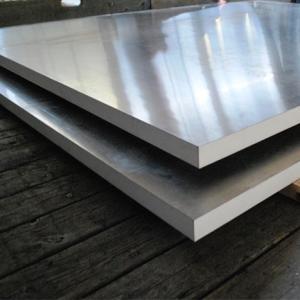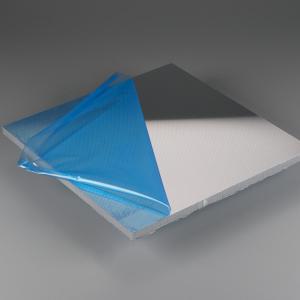Smooth Cargo Aluminum Siding Sheets - AA5XXX Coated Aluminum Coils for Construction
- Loading Port:
- Shanghai
- Payment Terms:
- TT OR LC
- Min Order Qty:
- 5 m.t.
- Supply Capability:
- 10000 m.t./month
OKorder Service Pledge
OKorder Financial Service
You Might Also Like
Specification
1.Structure of AA5xxx Coated Aluminum Coils Used for Construction Description
AA5xxx Coated Aluminum Coils Used for Construction are widly used in decoration field. For the painting, it depends on the using evironment. If you use in the open air, we recommend the PVDF coated aluminium coils. This kind of painting can last 15-20 years. If you use in the room, we recommend PE coated aluminium coils. The price is much more competitive.
2.Main Features of AA5xxx Coated Aluminum Coils Used for Construction
1)excellent quality,good credit
2)competitive price,comfortable service
3)Samples for free
4)fast delivery,small order accepted
5)Good rust resistance
6)clean, flat, no wrinkle, no scratch, oil free.
3.AA5xxx Coated Aluminum Coils Used for Construction Images
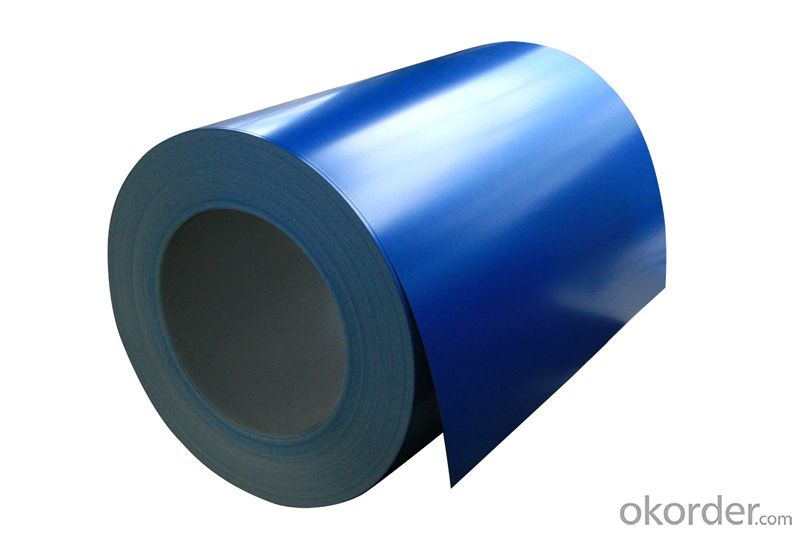
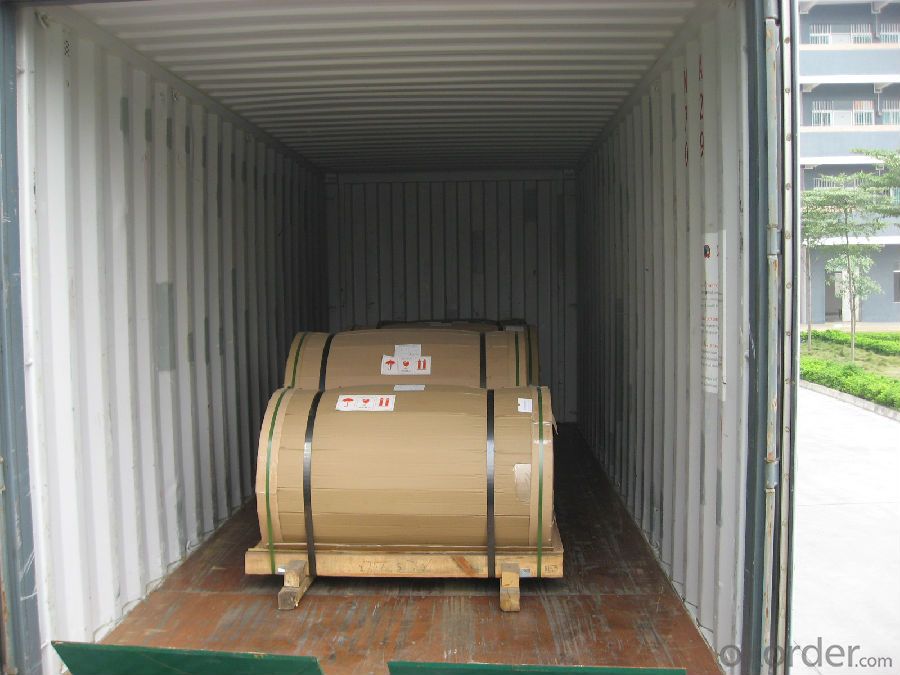
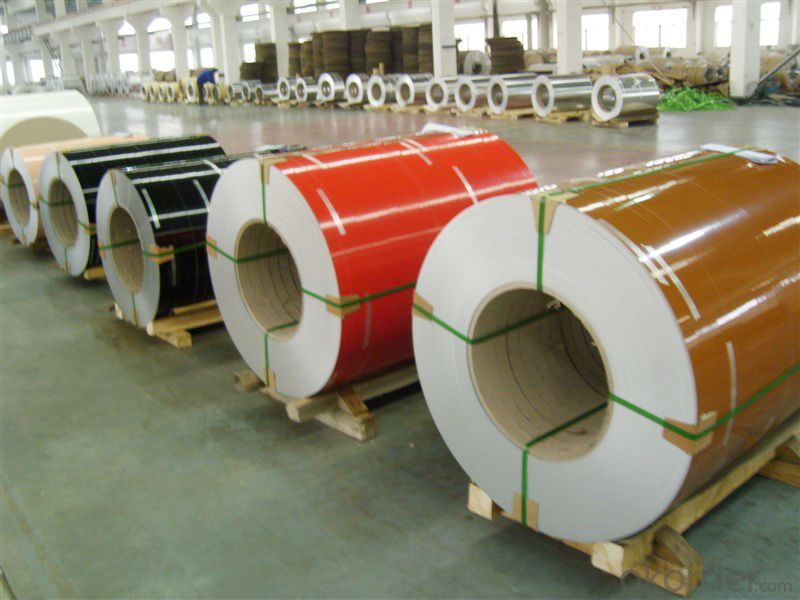
4. AA5xxx Coated Aluminum Coils Used for Construction Specification
Alloy | AA5xxx |
Temper | H14,H16,H18,H22,H24,H26,H32,O/F |
Thickness | 0.03mm-3.0mm |
Width | 30mm-1700mm |
Coating | PE,PVDF,Epoxy |
Painting Thickness | Standard 16-25 Mic, max 40 Mic |
Color | According to RAL colors or customers' samples |
Standard | GB/T 17748-1999 |
5. FAQ of AA5xxx Coated Aluminum Coils Used for Construction
What is the quality standard?
---Usually our standard is GB3880-2006
What is the largest width?
---It is 2300mm
When will you deliver the products?
AA5xxx Mill-Finished Aluminum Coils Used for Construction will be delivered within 35 days after receiving advanced payment or original L/C.
- Q: Can aluminum sheets be used for heat dissipation?
- Indeed, heat dissipation can be achieved by employing aluminum sheets. Renowned for its outstanding thermal conductivity, aluminum effectively conducts heat away from its origin, rendering it highly sought-after in numerous industries for heat sinks and heat exchangers. By molding and shaping aluminum sheets into diverse arrangements, surface area can be maximized, thereby augmenting heat dissipation. Additionally, the lightweight and corrosion-resistant characteristics of aluminum render it a favored material for applications involving heat dissipation.
- Q: Can aluminum sheets be used for roof flashing?
- Yes, aluminum sheets can be used for roof flashing. Aluminum is a popular choice for roof flashing due to its durability, corrosion resistance, and lightweight properties. It provides a reliable barrier against water penetration and helps to redirect water away from vulnerable areas on the roof, such as valleys and chimneys. Additionally, aluminum flashing is relatively easy to install and maintain, making it a practical choice for roof flashing purposes.
- Q: Can aluminum sheet be painted or coated after fabrication?
- Yes, aluminum sheet can be painted or coated after fabrication. Aluminum is a versatile material that can be easily painted or coated to enhance its appearance or provide additional protection. The process involves preparing the surface by cleaning and removing any contaminants, followed by applying a primer to improve adhesion. After the primer has dried, a topcoat of paint or coating can be applied to achieve the desired color or finish. The type of paint or coating used will depend on the intended use and the specific requirements of the application. Overall, painting or coating aluminum sheet after fabrication is a common practice and can greatly enhance its aesthetics and durability.
- Q: This question asks about the various grades of aluminum sheets and the impact of these grades on their pricing.
- <p>Aluminum sheets are categorized into different grades based on their composition and properties. The most common grades include 1000 series (99% pure aluminum), 3000 series (aluminum-manganese alloys), 5000 series (aluminum-magnesium alloys), and 6000 series (aluminum-magnesium-silicate alloys). Each grade has unique characteristics affecting their applications, such as corrosion resistance, strength, and formability. The price of aluminum sheets varies with the grade due to differences in purity, alloying elements, production complexity, and market demand. Purity and the addition of alloying elements can increase the cost, while the availability and demand in the market also influence pricing. For instance, 1000 series sheets are generally cheaper due to their high purity and lack of alloying, while 6000 series sheets, known for their strength and durability, command a higher price.</p>
- Q: Are aluminum sheets suitable for thermal insulation?
- Aluminum sheets, by themselves, are not suitable for thermal insulation. Despite aluminum's ability to conduct heat and electricity well, it lacks sufficient insulating properties. Surprisingly, instead of blocking heat, aluminum sheets can actually transfer it, rendering them ineffective for thermal insulation purposes. To achieve proper thermal insulation, it is common to use materials with low thermal conductivity, such as fiberglass, mineral wool, or foam boards. These materials are specifically engineered to trap air or establish a barrier that minimizes heat transfer, thus ensuring efficient insulation.
- Q: Can aluminum sheets be used in cryogenic applications?
- Cryogenic applications can indeed utilize aluminum sheets. The thermal conductivity and low temperature characteristics of aluminum render it an appropriate substance for cryogenic settings. It can endure exceedingly low temperatures without succumbing to brittleness or compromising its structural integrity. Furthermore, aluminum is both lightweight and resistant to corrosion, rendering it a pragmatic selection for cryogenic applications where weight and durability are crucial considerations. Nevertheless, it is imperative to ascertain that the precise aluminum alloy selected is compatible with the intended cryogenic application, as different alloys may exhibit differing properties and performance levels at lower temperatures.
- Q: What are the different types of surface treatments available for marine-grade aluminum sheets?
- There is a variety of surface treatments available for marine-grade aluminum sheets, each with unique benefits and characteristics suitable for different applications. 1. Anodizing: By electrolysis, a protective oxide layer is created on the aluminum sheet's surface. Anodized aluminum sheets provide excellent resistance to corrosion, increased durability, and can be colored or dyed for aesthetic enhancement. 2. Powder Coating: Dry powder is applied to the aluminum sheet and then cured through heat, resulting in a tough and durable coating. Powder-coated aluminum sheets offer exceptional resistance to corrosion, abrasion, and fading, and come in a wide range of colors. 3. Polishing: Imperfections on the aluminum sheet's surface are removed through polishing, resulting in a smooth and shiny finish. This treatment is commonly used for decorative purposes to enhance the visual appeal of marine-grade aluminum sheets. 4. Brushing: Abrasive pads or brushes are used to create a textured surface on the aluminum sheet. Brushing is often employed to conceal scratches or imperfections and can provide a unique aesthetic appearance. 5. Chemical Conversion Coating: A chemical solution is applied to the aluminum sheet, reacting with the surface to form a protective coating. Chemical conversion coatings enhance the aluminum's corrosion resistance and can also serve as a base for further surface treatments, such as painting. 6. Clear Coating: A transparent protective layer is applied to the aluminum sheet. Clear coating helps prevent corrosion and oxidation while maintaining the natural appearance of the aluminum surface. When selecting a surface treatment, it is crucial to consider the specific requirements and intended use of the marine-grade aluminum sheets. Each treatment offers different characteristics in terms of corrosion resistance, durability, aesthetics, and cost, allowing for customization based on the application's specific needs.
- Q: Can aluminum sheets be used in aerospace industries?
- Yes, aluminum sheets are commonly used in aerospace industries. Aluminum is a lightweight and corrosion-resistant material that possesses excellent strength-to-weight ratio, making it ideal for various aerospace applications. It is used in the construction of aircraft structures, such as wings, fuselage, and landing gear, due to its ability to withstand high stress and pressure. Additionally, aluminum sheets are easily formable and can be fabricated into complex shapes, contributing to the design flexibility required in the aerospace industry. However, it is important to note that aluminum alloys are typically used in aerospace applications rather than pure aluminum, as they offer enhanced mechanical properties and improved performance.
- Q: Do you use aluminum alloy boards or aluminum plates for outdoor billboards?
- Pure aluminum density (P =2.7g/cm3), iron is about 1/3, the low melting point (660 C), aluminum is face centered cubic structure, so it has high plasticity (delta psi:: 32~40%, 70~90%), easy processing, can be made into various sections and plates. The corrosion resistance is good; but pure aluminum strength is very low, the annealed state sigma B is about 8kgf/mm2, it is not as a structural material. Through the long-term production practice and scientific experiments, people gradually to join the alloying elements and the use of heat treatment to strengthen aluminum, which has been a series of Aluminum Alloy. Adding alloy elements to form certain can with high strength in keeping advantages of pure aluminum etc. at the same time, a b value can reach 24 ~ 60kgf/mm2. so that its "strength" (strength and the ratio of the proportion of b/ sigma rho) more than a lot of steel structure become an ideal material, widely used in machinery manufacturing, transport Machinery, power machinery and aviation industry, aircraft fuselage, skin, compressor and so on, often made of aluminum alloy, in order to reduce the weight. Using aluminum alloy instead of steel plate welding, the structure weight can be reduced by more than 50%
Send your message to us
Smooth Cargo Aluminum Siding Sheets - AA5XXX Coated Aluminum Coils for Construction
- Loading Port:
- Shanghai
- Payment Terms:
- TT OR LC
- Min Order Qty:
- 5 m.t.
- Supply Capability:
- 10000 m.t./month
OKorder Service Pledge
OKorder Financial Service
Similar products
Hot products
Hot Searches
Related keywords
